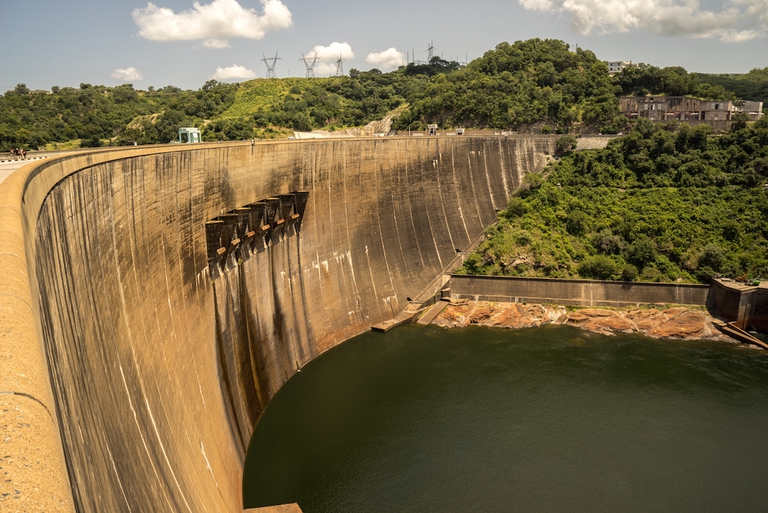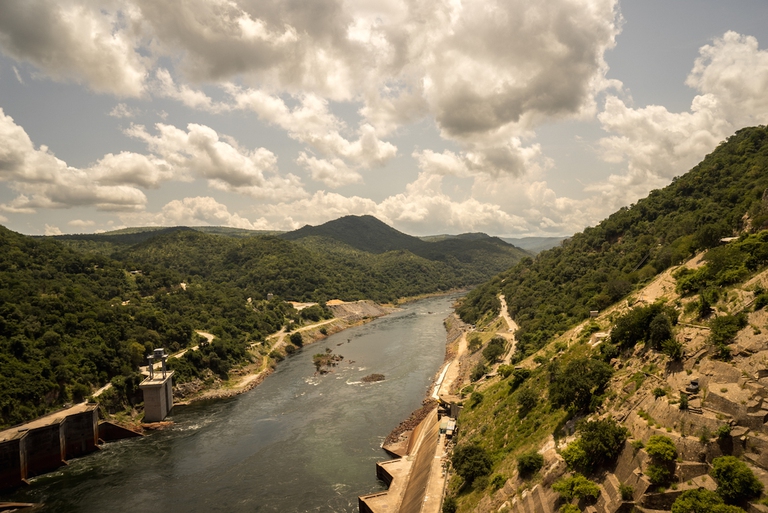
A group of experts in Tokyo suggested pouring radioactive water from Fukushima into the open sea. A marine biochemist explains the consequences of this absurd decision.
The Kariba Dam lies on the Zambezi River, straddling the border between Zimbabwe and Zambia, and is the world’s largest manmade reservoir by capacity. It is aging, raising grave concerns such as the possibility of chemical reactions occurring, as well as seepages and cracks on its wall forming. The dam is also vulnerable to earthquakes
The Kariba Dam lies on the Zambezi River, straddling the border between Zimbabwe and Zambia, and is the world’s largest manmade reservoir by capacity. It is aging, raising grave concerns such as the possibility of chemical reactions occurring, as well as seepages and cracks on its wall forming. The dam is also vulnerable to earthquakes and heavy flooding from upstream waters into the plunge pool.
The dam was built in 1955 by Italian company Impresit, subsequently absorbed by Salini Impregilo, responsible for building the Gibe III dam threatening thousands of indigenous Ethiopians and Kenyans. The Kariba Dam, opened in 1959, is 579 metres wide and 128 high and holds back over 189 billion tonnes of water. It lies 1,300 kilometres upstream from the Indian Ocean.
“The sluice water causes an eddy which has carved a plunge pool over decades. The continual water erosion is cutting through the plunge pool backwards towards the dam, where it is beginning to erode the dam itself,” says Zambezi River Authority (ZRA) spokesperson Munyaradzi Munodawafa. “People should not panic because the authority is doing everything possible to contain the situation,” he continues.
Furthermore, according to a World Commission on Dams report, Kariba lies in a tectonically active area, at the southern end of the African Rift Valley system, a longitudinal fault zone.
Authorities have warned that if no repairs are carried out within three years the Kariba may collapse. If that were to happen, it would cut Zambia off from about half of its electricity, a disaster for a country and region that already suffers severe power deficits. The rupture may also halt the tourism industry around the river as well as in the Lower Zambezi game parks downstream.
The governments of Zimbabwe and Zambia have raised around 295 million dollars from international investors, out of the 300 million dollars target set for repairing the cracks that were discovered during assessments of the dam. Repair works have been set to start in March 2016.
Siamo anche su WhatsApp. Segui il canale ufficiale LifeGate per restare aggiornata, aggiornato sulle ultime notizie e sulle nostre attività.
![]()
Quest'opera è distribuita con Licenza Creative Commons Attribuzione - Non commerciale - Non opere derivate 4.0 Internazionale.
A group of experts in Tokyo suggested pouring radioactive water from Fukushima into the open sea. A marine biochemist explains the consequences of this absurd decision.
A federal court in Washington, D.C. has struck down the Dakota Access Pipeline, following years of campaigning by the Standing Rock Sioux tribe.
The Scottish island of Eigg is self-sufficient for its energy needs, relying almost entirely on renewable sources, especially thanks to a coordinated community effort.
President Magufuli in unmovable in going ahead with the Stiegler’s Gorge dam despite conservationists’ warnings of the damage it will cause the Selous Game Reserve’s ecosystem and wildlife.
A large dam along the Luangwa River in Zambia would have posed a serious risk to local people and wildlife, leading hundreds of thousands to oppose it. A call to which the government responded by halting plans to build it.
The first one megawatt solar power plant in the Chernobyl exclusion zone has become operational. This is the first step in a renewable energy development project promoted by the Ukrainian government in the area.
A tanker exploded at a gas and petrol station in Nigeria’s Nasarawa state on the 10th of September, killing 35 people and leaving some burned beyond recognition; 3 citizens had several spine and brain injuries, 2 of them are still on Intesive Care Units. Fela Habila , a local singer, is now stable and out of danger but
The largest tidal power plant in the world will be built in the Larantuka Straits. It will serve 100,000 people and help overcome some of the challenges of energy provision in Indonesia.
Robben Island’s solar energy micro-grid project will produce almost one million kilowatt hours of electricity annually, significantly reducing the cost and impact of buying diesel.









